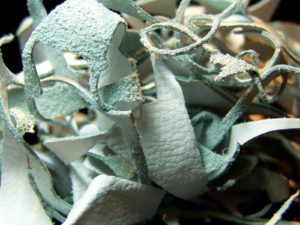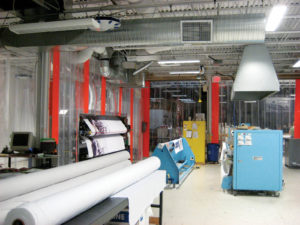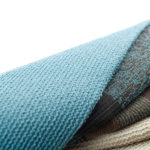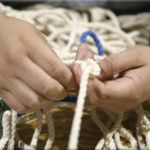From magazine articles to seminars to trade show floors, the topic of sustainability has worked its way into business consciousness. And most manufacturers and distributors are starting to realize that implementing a few green elements here and there is not enough. Is it possible for a business to be a responsible steward of both the planet and the company’s profit margin?
One philosophy and business model addressing that question is “Cradle to Cradle.” Developed by architect William McDonough and chemist Michael Braungart, the Cradle-to-Cradle concept calls for the industrial world to transform planet-polluting practices into ecologically intelligent design. Traditional manufacturing processes reflect a “cradle to grave” process—from the factory to the consumer to the landfill. In the Cradle-to-Cradle approach, materials are circulated in closed loops, increasing the value of a material through reuse and keeping it from harming the environment.
The Cradle-to-Cradle paradigm promotes innovation and profits. That is, companies can create new products derived from reused materials and subsequently improve the bottom line. It’s a business model that has caught the attention of the specialty fabrics industry. When Randy and Craig Rubin, owners of Crypton Inc. in West Bloomfield, Mich., decided to provide the architecture and design community with greener products, they sought out development partners, including MBDC, the product and process design firm founded by McDonough and Braungart.
MBDC and SCS [Scientific Certification Systems] were among the first third-party companies that developed protocols for evaluating and certifying materials,” says Hardy Sullivan, vice president for research and development at Crypton. “Growing brand awareness, established protocols and material expertise made them the right development partners for Crypton Green.”
As the specialty fabrics industry seeks to develop truly sustainable products and practices, models such as Cradle to Cradle can help answer the many questions raised by green economics: What does “sustainability” mean to our company? Do we need third-party certification? Why bother? And where do we start?
Manufacturing sustainable fabric products
The starting point in developing a green business model is determining what sustainability means to your company. “To us, ‘sustainable’ is a continuous progression toward eliminating negative impacts on tomorrow’s resources and quality of life,” Sullivan says.
In June 2006, Crypton launched Crypton Green, a product line that includes specific fiber types, a stringent analysis of chemical inputs, and greener chemistry. “Our new formulation reduced or eliminated formaldehyde, PFOA and halogenated flame retardants,” Sullivan explains. The Crypton Green products are designed to reduce their impact on natural resources by promoting features such as fibers recycled from consumer or industrial waste streams; wool dyed without heavy-metal dyes; and the use of polypropylene, a fiber that requires less energy to produce.
In 2007, Crypton transitioned all of its conventional production of Crypton Super Fabrics to the greener chemistry. Additional manufacturing improvements include the purchase of a packaging machine that tailors the amount of plastic to the roll size, using 10 percent less material; recycling all fabric scraps into carpet underlayment and sound-absorbing shoddy for cars; recycling cardboard boxes and tubes; and installing a new raw-material recovery system. The company also has teamed with Sterling Planet to purchase renewable energy credits.
Sustainable practices in the speciality fabrics industry
Sustainability isn’t limited to manufacturing processes, however. American Fibers & Yarns (AF&Y), Chapel Hill, N.C., has undertaken critical steps to improve its facility output. “With the addition of computer monitoring controls, AF&Y has reduced kilowatt usage needed to operate air compressors and HVAC systems. Better organization of warehouses has greatly reduced propane gas usage for lift trucks, and changes in warehouse design have eliminated natural gas usage altogether. These green initiatives have translated into monthly energy savings of $26,000,” explains Tracey Campbell, AF&Y manager, market development. “We have also reduced water consumption by 15,000 gallons per day.” Furthermore, the manufacturer has eliminated the use of sulfuric acids in the HVAC system, reduced overall chemical treatments by 50 percent and eliminated all heavy metals from treatment chemicals.
Recycling is another important initiative for companies that tout sustainability. Paul Glynn, general manager of Portland Color, a specialty printer in Portland, Maine, says his company worked with a local recycling company to deal with the waste it produces. “We’ve since cut our trash by 60 percent by splitting it into eight different waste streams,” he says.
AF&Y has also made a significant effort to keep waste out of the landfill by baling and recycling all cardboard materials. Used oils, wooden pallets for shipments and plastic totes are all recycled as well. In addition, AF&Y has implemented a “take back” program for the recycling of fabrics and yarns.
Reuse is another critical rung in the sustainability ladder. In fact, some companies have formed for the sole purpose of repurposing waste and scrap from multiple industries, including fabrics and textiles. One company in particular, Sustainable Solutions Inc. (SSI) in Wagoner, Okla., works with companies looking to turn their post-industrial waste streams into products of a higher value. The process is known as SmartStream™. “We determine the problem we’re solving, what the waste stream is that we’re engaging, and how we can repurpose that into a new material that could be used in another process or a new end product,” says Jeffrey Post, SSI director of marketing and brand management. “What makes these streams smart is that they all bring some intelligence, some performance aspect, to the product they’re used in.”
In one of its more high-profile projects, Sustainable Solutions is assessing and endorsing Wal-Mart’s T-shirt suppliers in Asia. “We’re bringing that cotton waste to a regeneration point, opening and then engineering it into medium-length SmartStream cotton fibers. We’re then manufacturing a continuous nonwoven cotton-based substrate,” Post explains. The result: Rogers, Ark.-based Strateline Industries, SSI’s nonwovens division, along with wipes converter Rockline Industries, is producing a new wet wipe for Wal-Mart that has a high percentage of cotton. “The majority of wipes on the market have a low percentage of cotton in them because using typical virgin cotton in a disposable product is not economically viable. So now, what was initially Wal-Mart’s cotton T-shirt waste stream will go back to their shelves as a cotton wet wipe,” Post says.
Third-party certification of sustainable businesses
Not only do organizations such as MBDC help develop a sustainable business model, but they provide third-party certification as well. According the MBDC, C2C certification gives companies a tangible and credible way to measure achievement, and helps customers choose products that “are pursuing a broader definition of quality.”
To be C2C certified, companies must show they are using safe and healthy materials, designing with material reutilization in mind, using energy and water efficiently and implementing strategies for social responsibility.

Like Crypton, AF&Y has found success working with MBDC. The manufacturer had all its raw material components assessed for their impact to human and environmental health in accordance with MBDC requirements. “As a result of the evaluation, we are collaborating with suppliers to create new formulations so that ingredients that do not currently qualify for Cradle-to-Cradle certification can be phased out as new technologies are available,” Campbell notes. “In the meantime, we are actively promoting our compliant color palettes so that customers can knowingly create and submit fabrics for MBDC Cradle-to-Cradle certification.”
Campbell believes that the independent, third-party certification is important to AF&Y and its customers in several ways. “It validates the environmental efforts we make as a company,” she says. “Cradle-to-Cradle certification raises the bar and holds companies accountable for creating products that are based on sound environmental and sustainable platforms.”
Reasons to initiate sustainable policies
Companies that initiate sustainable policies do so for a variety of reasons, and in return, they see myriad benefits. One such motivation is economics. “Manufacturers have waste. It costs them money. They had to pay for the virgin material. They’re paying for the waste created and the cost to have it hauled away,” Post says. “We’re looking to eliminate a lot of the negative economics for clients.”
Throughout its history, The Hammock Source in Greenville, N.C., has reused and recycled nearly all of its scrap materials. “For us, while the social and environmental benefits are fantastic, it really has been simple economics that has pushed this company into practices that would be called green,” says Frank Rabey, manager of creative marketing for The Hammock Source.
Those green practices include social responsibility. The Hammock Source partners with the Eastern Carolina Vocational Center to pick up its office paper and magazines for recycling. “It ends up making some money for the vocational programs, which provides a nice social benefit,” Rabey notes. “It also further reduces landfill-bound waste.”
Campbell says that AF&Y’s many sustainable projects have not only resulted in a stronger bottom line, but employees have gotten on board with the principles of sustainability as well. “Our green initiatives have more deeply instilled environmental stewardship into our corporate culture across the board,” she says.
Of course, no one can deny the altruistic aspect to going green. “Our business has benefited from the fact that it feels good to do this,” says Glynn, whose company uses Eco-Celtic and Eco-Trapeze recycled fabrics from Dazian. “We’re able to offer materials to customers they can print on to make them feel they’re doing something sustainable.”
Sustainability challenges for the speciality fabrics industry
Customers need to find value in a green product, or else they won’t buy it. The best way to tackle that challenge, Post believes, is to create a high-quality, high-performing product. “If you think of anything from the Hemi engine to the iPhone, people will generally pay more if it does more,” Post says. “Design is an expected component of a product, but they will almost always pay more for performance.”

One challenge that many in the specialty fabrics industry face is something known as greenwashing. In greenwashing, manufacturers mislead consumers about the environmental benefits of a product. For example, a company may say that its fabric is 100 percent organic, but it might have been manufactured in and shipped from a facility half a world away. Taking time to ensure that your company is looking at all aspects of sustainability—from cradle to cradle, for example—can help keep greenwashing at bay.
Perhaps the biggest challenge facing any industry that goes green is making sure that consumers are personally vested in sustainability. Rabey shares the story of The Hammock Source CEO Walter Perkins III, an avid outdoorsman. “Walter has said, ‘If you spoil my environment, I can’t do what I want anymore,’” Rabey says. “I wish more people would be able to make that personal connection. Until you can appreciate the benefit to you, the cause is lost.”
Models like Cradle to Cradle have challenged industries to take a holistic approach to going green. Cyrpton, for one, has made it through the fog of “Where do I begin?” says Sullivan. “We’re in the mode of trying to become very sophisticated in how we operate and measure our performance. Commercial product producers, as a whole, are moving beyond the strategy of coming up with a ‘green’ product based on a single attribute or some property with low relevance. The movement now is to take a comprehensive approach toward sustainability.”
Holly O’Dell is a freelance writer based in southern California.
 TEXTILES.ORG
TEXTILES.ORG









